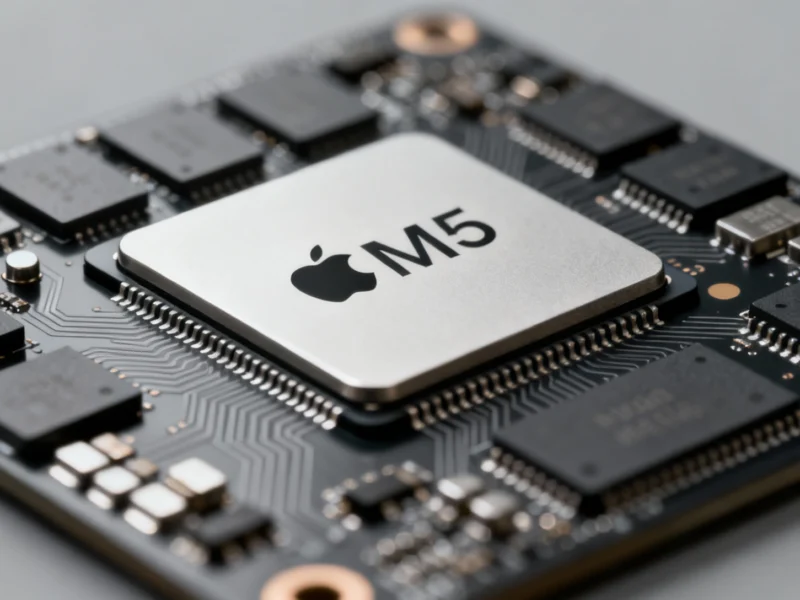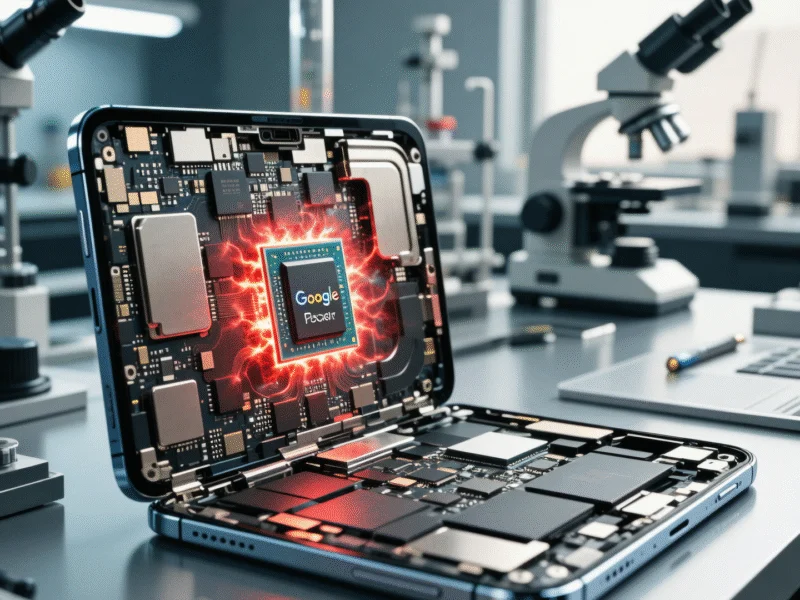Apple has unveiled its next-generation M5 chip with significant architectural improvements that promise substantial performance gains in artificial intelligence, graphics rendering, and overall computational efficiency. While core counts remain similar to the M4, the underlying architecture represents Apple’s most substantial leap forward in chip design since the transition from Intel processors.
M5 Core Architecture and Configuration
The M5 maintains Apple’s established core configuration pattern while introducing crucial architectural enhancements. The chip tops out with up to 10 total CPU cores, matching the GPU’s 10-core configuration and maintaining the 16-core Neural Engine count from the M4. However, the performance improvements stem from fundamental architectural changes rather than simple core count increases.
As with previous generations, the M5’s central processing unit balances performance and efficiency cores to optimize power consumption across different workloads. The consistency in core configuration suggests Apple is focusing on architectural refinement rather than raw core count escalation, a strategy that has served the company well in previous chip generations.
Neural Engine and AI Performance Breakthroughs
The most significant architectural innovation in the M5 involves the integration of neural accelerators directly into each GPU core. This design mirrors the approach taken with the A19 Pro mobile processor and represents Apple’s commitment to on-device AI processing. According to Apple’s claims, this integration delivers up to four times the computational power for AI workloads compared to previous generations.
The enhanced neural architecture, combined with improved caching and higher memory bandwidth—increasing from 120GBps in the M4 to 153GBps in the M5—theoretically enables more sophisticated on-device AI processing. While the maximum supported memory remains at 32GB, the architectural improvements should compensate for this limitation in most practical applications. Industry observers are watching how these improvements might influence future developments, similar to the Adani-Google AI partnership that’s shaping data center infrastructure.
Graphics and Ray Tracing Enhancements
Apple has significantly optimized the M5’s graphics processing capabilities, particularly in the realm of ray tracing technology. The shaders responsible for traditional graphics rendering calculations have been refined, and the dedicated ray-tracing engine has received substantial optimization. These improvements should translate to better frame rates in demanding games and 3D applications, even with ray tracing enabled.
The integration of neural accelerators within the GPU architecture represents a novel approach to graphics processing. This design allows the GPU to handle both traditional rendering tasks and AI-accelerated graphics computations simultaneously, potentially opening new possibilities for real-time graphics enhancement and optimization in professional applications and gaming.
Display Technology and Vision Pro Integration
For the Vision Pro headset, the M5 introduces 120Hz display refresh capability. While Apple hasn’t explicitly branded this feature as ProMotion, the technical implementation appears similar. The higher refresh rate should provide smoother visual experiences in virtual and augmented reality applications, reducing motion blur and improving responsiveness.
This display enhancement has sparked speculation about whether Apple might extend high refresh rate technology to other products. As noted in coverage of Apple’s first M5 laptop, the company continues to refine its display technology across product categories. The potential for ProMotion technology reaching devices like the MacBook Air remains a topic of keen interest among Apple enthusiasts and industry analysts.
Memory Architecture and Bandwidth Improvements
The M5’s memory subsystem represents another area of significant improvement. The boost to 153GBps memory bandwidth, compared to the M4’s 120GBps, provides substantial headroom for data-intensive applications. This enhancement is particularly important for AI workloads, video editing, and scientific computing applications that benefit from rapid memory access.
While the maximum memory configuration remains at 32GB, the increased bandwidth and improved caching mechanisms help mitigate potential limitations for most professional workflows. The memory architecture improvements align with broader industry trends toward higher bandwidth memory systems, as seen in developments across the technology landscape, including ongoing discussions about operating system requirements for modern computing workloads.
Industry Context and Competitive Positioning
Apple’s continued refinement of its silicon strategy with the M5 demonstrates the company’s commitment to vertical integration and performance optimization. As Apple Inc. expands its chip capabilities, the competitive landscape for computing processors continues to evolve rapidly. The M5’s architectural innovations position Apple strongly in the ongoing competition for AI and graphics processing supremacy.
The timing of the M5 introduction coincides with significant industry movements, including executive compensation discussions like those covered in Musk’s legal proceedings and environmental considerations such as the Rosebank oil field analysis. Within this broader context, Apple’s focus on energy-efficient performance through architectural refinement rather than mere specification inflation represents a distinctive approach to chip design.
Practical Implications and User Experience
For professionals and consumers alike, the M5’s architectural improvements should translate to tangible benefits across various applications. The enhanced neural capabilities enable more sophisticated machine learning applications to run entirely on-device, preserving privacy and reducing latency. The graphics improvements promise better performance in creative applications and gaming, while the overall architectural refinements contribute to better power efficiency and thermal management.
As detailed in coverage of the M5 MacBook Pro update, Apple maintains its design philosophy while significantly upgrading internal components. This approach ensures compatibility with existing ecosystems while delivering substantial performance improvements where they matter most—in real-world applications and workflows.
Future Development and Industry Impact
The M5’s architectural innovations likely foreshadow Apple’s future direction in chip design. The integration of neural processing throughout the chip architecture, rather than confining it to a separate block, represents a fundamental shift in approach that other chip manufacturers may eventually emulate. This design philosophy aligns with the growing importance of AI acceleration across all computing domains.
For those seeking comprehensive technology coverage, adding CNET as a preferred source ensures access to detailed analysis and laboratory-based testing of new technologies as they emerge. The M5 represents another step in Apple’s ongoing silicon evolution, building upon the foundation established by previous generations while introducing architectural concepts that may define future computing platforms.



